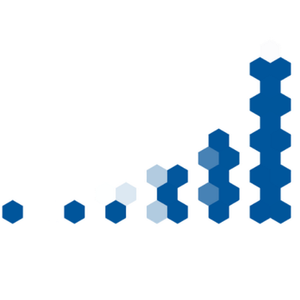Wie Apple die DMA-Anforderungen umsetzen wird
Allgemein gesprochen: Nur das absolute Minimum und dabei jede Gelegenheit nutzend, Dinge so zu gestalten, dass sich nicht wirklich etwas ändern wird.
Apple behält allerdings auch künftig teilweise die Kontrolle über die Installation von Anwendungen, selbst wenn diese außerhalb des eigenen App Stores stattfindet. Die Apps können nicht wie beim Google-System Android einfach mit dem Browser heruntergeladen und auf eigenes Risiko installiert werden. Vielmehr müssen die Kunden dafür „beglaubigte“ Marktplätze verwenden. Das sind iPhone-Anwendungen, die mit dem Segen von Apple wiederum andere Apps installieren dürfen.
Apple-Topmanager Phil Schiller verweist im Gespräch mit der Nachrichtenagentur dpa auf die Risiken, die mit einer direkten Installation verbunden seien: „Wenn jede beliebige Webseite Apps auf das Gerät herunterladen kann, stellt dies eine große Gefahr für die Sicherheit und den Datenschutz der Nutzer dar“, so Schiller.
Schiller hat recht damit. Die Notarization durch Apple nutzt Apple allerdings, um alles weitere durchzusetzen wie die CTF, die ich unten bespreche, und die Reporting-Pflichten für App-Marktplätze und alle Apps auf ihnen.
Das kann im nächsten Schritt nur bedeuten, dass die EU Notarization als unzulässiges Gatekeeping untersagen wird, wenn sich herausstellt, dass sich unter dem DMA dank Apples Gegenmassnahmen in der iOS-Realität nichts ändert.
Und dann haben iOS-Nutzer wirklich weniger Sicherheit.
(Siehe unter anderem MacStories für alle Änderungen (NFC, Webrendering))
Die CTF-Handgranate – Du sollst kein Ökosystem neben meinem haben
Eine gute Zusammenfassung gibt es bei Apple to Developers: Heads I win, tails you lose (part 3) | Mobile Dev Memo. Etwa die neu eingeführte CTF-Gebühr:
Core Technology Fee (CTF). To my mind, this is the most controversial aspect of the new terms. All developers that opt into the new framework will be obligated to pay a “core technology fee” of €0.50 for every “first annual install” of their app above 1MM generated from either the App Store or an alternative app marketplace. Apple defines a first annual install as (emphasis mine):
Critically, re-installs and app updates are considered to be first annual installs and presumably count against the 1MM free threshold. Notably, apps that serve as alternative app marketplaces aren’t granted the 1MM free first annual threshold exemptions: per Apple’s documentation, “developers of alternative app marketplaces will pay the CTF for every first annual install of the app, including installs that occur before the 1 million threshold is met.”
Das heißt, Apple hat unter anderem eine neue Gebühr eingeführt, die Apps zahlen müssen, die über andere Appstores vertrieben werden. Zusätzlich müssen die neuen Appstores ebenfalls zahlen.
Die Struktur der Gebühr soll offensichtlich sicherstellen, dass die alternativen Wege nicht attraktiv sind:
The Core Technology Fee effectively undermines the viability of the new business terms. First, the applicability on re-installs removes control from the developer over when the 1MM free install threshold is exhausted. Second, applying the CTF to app updates incentivizes the developer to not publish updates and penalizes them for a large existing user base. And third, the fact that the fee is paid on annual installs imposes an ongoing fine on user LTV: a highly-retained, habitual user of an app will trigger a €0.50 fee for the developer at the time of installation and then every year hence as they update the app.
Fundamentally, the CTF compromises the freemium business model, which dominates the mobile economy and is predicated on zero marginal distribution costs.
Eric Seufert macht hier den wichtigen Punkt. Apples Ziel mit der CTF scheint zu sein, sicherzustellen, dass die Grenzkosten für das Wachstum der Apps hoch genug sind, um Viralität potenziell ruinös zu machen.
Vieles funktioniert online nur weil/wenn die Grenzkosten gleich Null sind.
Apple sucht also einen ökonomischen Weg, alles abseits der eigenen Plattformwege abzutöten.
it would cost an alternative app store operator €1MM to generate 2MM first-time installs of an alternative app store, not accounting for marketing costs.
The drag on the app economy of the CTF is compounded by this fact: the app stores themselves need to pay for every install they achieve, and the apps that are distributed on those app stores must also pay for the installs they achieve above 1MM (including app updates and re-installs). Every time the CTF is applied, it reduces the LTV of that install by €0.50, meaning the developer of the app has €0.50 less to spend on user acquisition for installs.
Im Klartext: Es werden dank EU-Regulierung alternative Appstores auf iOS möglich. Apple hat sich allerdings eine beschränkende Gebührenstruktur überlegt, die Parallelwelten verhindern wird. Es wird keine iOS-Ökosysteme geben, die parallel zu iOS entstehen. Zumindest keine mit „kleinen“ Apps.
Für wen lohnt es sich trotzdem:
- Microsoft: Für einen eigenen Gamesstore. (Eventuell auch für Sony.)
- Epic: Fortnite, free at last.
- Meta: Ein Facebook/Metaversum-Ökosystem?
Mehr Kandidaten fallen mir nicht ein.
Dieser Text ist zuerst in Apple vs. EU: Handgranate namens Core Technology Fee, Betriebsysteme richtig regulieren, Steady geht in Werbung, AI Act-Leak, mehr (Nexus 183) am 26.01.2024 erschienen. Nexus ist das Mitgliederangebot von neunetz.com mit zusätzlichem Newsletter, exklusiven Podcasts und Forum. Mehr Informationen zum Mitglieder-Angebot hier.
